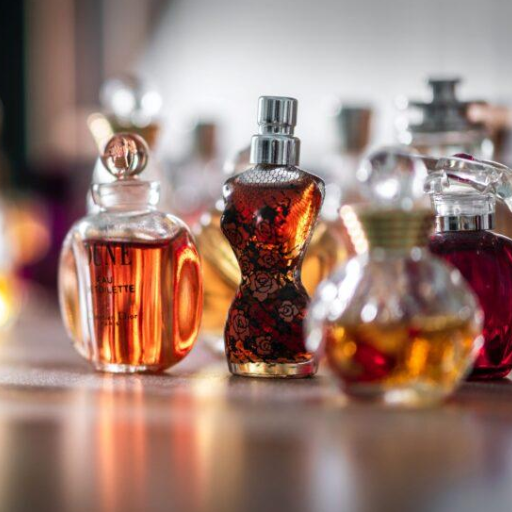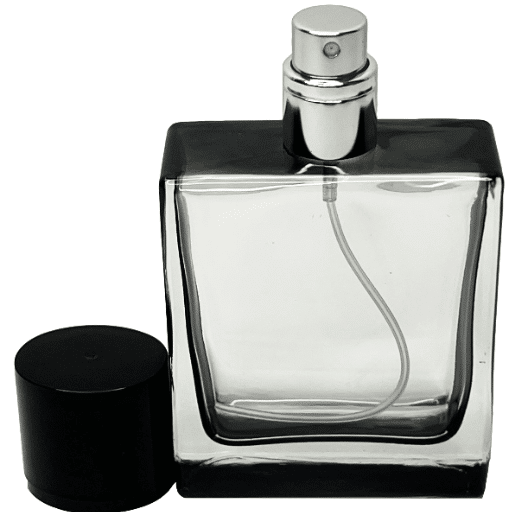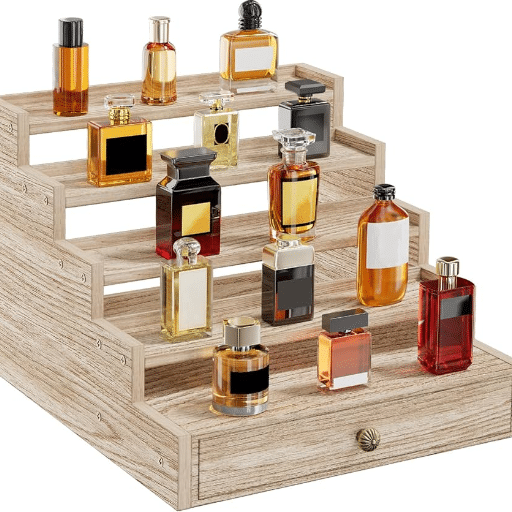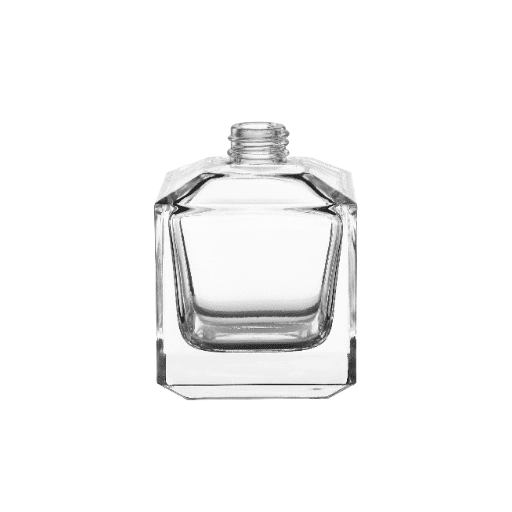When considering purchasing a new perfume, its packaging can indicate a lot about its legitimacy. In this day and age, where fraudulent products have taken the market by storm, knowing how to tell if a perfume box is fake is a must-have skill for smart consumers. This guide explains the major signs and details to keep an eye on, thus enabling you to make purchases with the right information. From subtle discrepancies in packaging to concealed indicators of quality, we will discuss everything that will guarantee you are getting the actual product. Focusing on gifting, or personal use, this article intends to serve shoppers who wish to steer clear from counterfeit products.
What are the key visual indicators that a perfume box is fake?
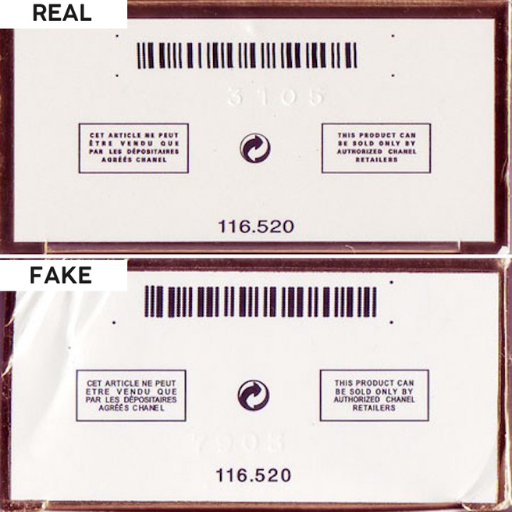
1. Spelling Mistakes or Overall Bad Print Quality
Look out for spelling mistakes, grammatical mistakes, or blurred writing on the box. Trusted brands rarely, if not ever, reproduce their own products with errors, meaning the printing should be devoid of defects.
2. Too Tight or Too Loose Packing
Perfume boxes should have cellophane wrap that is both clean and evenly packed, with minimal glue. Authentic seals should be even, not too messy or sealed too tight.
3. Shoddy Materials
A genuine box will use high-quality thick cardboard. If the box feels flimsy or the paperwork incurs some bend, it is a flag.
4. Mismatched Information
Check that the brand logo, font, and design match with the official product. Barcodes and batch numbers should be checked; discrepancies are a sign of a possible counterfeit.
5. Suspicious Pricing or Stickers
Counterfeit items commonly feature generic prices, low pricing, or stickers that mask substantially important information.
How to check the packaging quality of authentic perfume boxes
Always use utmost care and precision when verifying the legitimacy of perfume boxes as investigative aspects like printing quality, craftsmanship, and materials used need to be checked closely. Incorporating validity checkpoints helps, and one to start with is the type of matte used.
Premium establishments will often use a durable cardboard material for the perfume box, thus fulfilling the thick guideline alongside a sturdy feel, clean edges, and impeccable cuts. Afterward, look over the display finish; reputable brands often have polished matte or others with a smooth professional coating, further delivering the seal of credibility.
Print quality takes precedence next, as underlying factors, including illegitimate brands, do lack the capability to reproduce clean text. Inaccurate logo prints, lackluster colors, and blurry details all contribute to wrong descriptive phrases alongside vaguely used words add too. Lastly, from the framing side, the cellophane or other items should be wrapped without obstruction, blunt, and sealed tightly, as any sign of low quality whether a messy frame or lackluster delivery marks an imitation stamp.
Another point to verify is the alignment of brand components and serial numbers. Authentic perfume boxes will have logos, barcodes, and even batch numbers marked to perfection. Barcodes printed on the box should match those printed on the bottle. If the code is missing, duplicated, or stuck on a sticker, it could indicate counterfeit merchandise. As industry analysts suggest, up to 10 percent of upscale perfumes sold globally may be fakes, which underlines the significance of these checks.
Lastly, pay close attention to any extras that come with the package, including cards for verifying authenticity or additional inserts. These are extra pieces that come with every luxury item, and their quality is consistent, tailored, no spelling mistakes, and coordinates with the overall branding. Assessing such elements helps ensure you are acquiring a reputable product.
What to look for around the box to spot counterfeit products
While checking the box of a product for authenticity, inspect the quality and other details of the packaging. Authentic items usually come in tight cellophane that has no wrinkles and no loose edges. Counterfeit products, however, are poorly packaged with uneven seals.
Check the logos, fonts, and brand names printed on the box. Authentic packaging will have sharp prints with high resolution and the logos are aligned and proportioned properly. Counterfeit items are likely to have blurry or faded text, incorrect line spacing, or misspelled words. Also, look for embossed or metallic letters as those are essential details in the packaging for luxurious products. These details have to be cleanly imprinted or perfectly trimmed; any lack of crispness suggests forgery.
The batch code or serial number is another crucial detail. Authentic products have this code on their box and it should match the one on the bottle or item inside. For luxurious perfumes and cosmetics, these codes allow you to verify the production date and origin of the item using trustworthy online databases. Counterfeit items either lack this number or have a name on it that doesn’t match the product inside.
Finally, evaluate the general design and contents of the box. A genuine product is crafted from quality materials. Fake or counterfeit versions may use weak flimsy cardboard that easily tears or dents. Noticing these sol minimal details as mentioned will assist you to un confidently identifying a genuine product to avoid being tricked into purchasing fake products.
Common printing errors that reveal fake perfume packaging
Ensure that the quality along with all other details of the product’s packaging is up to standard when you check the box for authenticity. Counterfeit items have poorly packaged cellophane that is wrinkled, loose, uneven, and poorly sealed. Authentic items, however, are easier to spot and come wrapped in tight cellophane without any loose edges.
The brand names, logos and fonts printed on the box should be checked as well. Items with authentic packaging often include logos that are proportioned properly alongside sharp-branded prints that are high resolution. Counterfeit items will likely have logos that are incorrectly proportioned alongside texts that are blurry and misspelled or faded. Look for embossed letters alongside metallic ones; the absence of crispness in these words indicates a lack of precision which suggests forgery and is essential for luxurious products.
Another aspect to focus on which is equally important is the batch code or serial number. This code should match the one on the bottle or item inside the box as authentic products have this code attached to the box. Trustworthy databases can be used to verify the date of manufacture with luxurious perfumes and cosmetics items using these codes. Counterfeit items either have no names or unmatched numbers which means they lack this number.
Finally, assess the overall shape and design of the box. A box of a genuine product is made from quality materials. Fake or counterfeit versions may use weak flimsy cardboard that tears or shows dents easily. Seeing these minimal details as mentioned combined will help you confidently identify a genuine product instead of being scammed by fake products.
What should I examine on the perfume bottle itself to spot a fake?
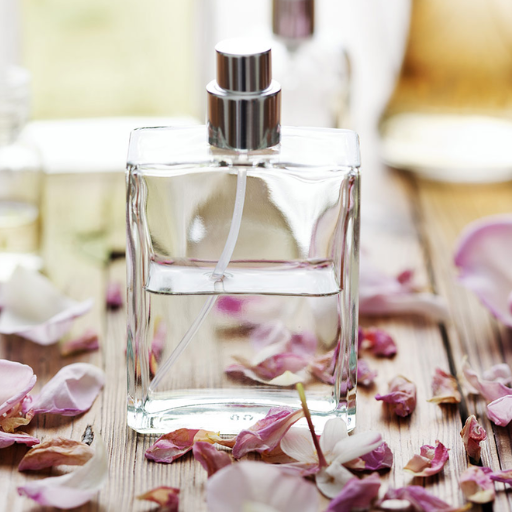
- Logo and Branding
Ensure the brand logo and text on the bottle match the official design. Look for sharp, precise fonts and consistent coloring.
- Material Quality
Authentic perfume bottles are usually made of high-quality, thick glass without bubbles or imperfections. Counterfeits often use cheaper materials.
- Bottle Cap
Check that the cap fits perfectly and aligns smoothly with the bottle. Loose or poorly fitting caps can be a red flag.
- Serial Numbers
Verify that the serial number on the bottle matches the one on the packaging. Any discrepancies should raise suspicion.
- Liquid Appearance
Inspect the perfume liquid. It should be clear and free of cloudiness or sediment, as authentic products maintain high standards of quality.
Key differences between authentic perfume bottles and imitations
1. Packaging Standard
In a beauty store, real perfume windows are bursting with elegance as each perfume is wrapped in a high-quality box that matches the brand’s style. It’s weighty and the edges are smooth plus the writing and the designs are perfectly aligned. The small details like the logos that are embossed or the holograms that are put on the take are unmatched. For fake perfumes, the telltale signs are poor-quality materials and blurrily printed writing.
2. Finish and design of the bottle
Looking up close, real perfume are decorated with flawless polish. The inscription are perfect and the glass where the perfume wll be placed is also smooth with no bubbles or any indentation. Known brands always create high-class bottles because they know their products will always have someone ready to pay for it. Fake perfumes on the other hand do not have any of these as they are not planned and so everything they do is a rush thus they get stickers with scratches on them.
3. Persistence of perfume and its contents
A manufacturer’s true kdein values his work because the perfume always has its intended scent, more so as time passes looking at the perfume composition, it has shape, heart, and base elements and is deep inside layered. No bounds lie towards cheap perfumes and they stink lacking scope in each arrangement rendering to mockery from real perfume and vanishing every day, ceasing to exist within only an hour, Unlike real perfumes with thicker fleeting grace periods of glory.
4. Bearing in mind branding and labels.
Verify if the perfume label is printed in high quality. Authentic perfume bottles have sharp, clear text and logo images. Check if the label has any trademark or copyright sign since such marks are normal for genuine packaging. Counterfeits typically portray themselves poorly with inconsistently used fonts, misspelled words, or faded prints. Take for example, top-tier brands Chanel and Dior—they spell out their product names correctly.
5. Pricing Strategy
Authentic designer perfumes are rarely sold at considerable discounts except during their sale period. If you think that some offer is too good, it probably is. Fakes are usually sold at a significantly lower price.
6. Barcode and Batch Codes
These codes aid in the verification of authenticity as well as determine the manufacturer’s origin, thus providing traceability. Genuine items will have a barcode and batch number that matches what is stated on the cover. Counterfeit items may have missing or unmatched codes, and at times stray numbers that do not match the order of standard batch numbering.
A buyer can distinguish imitation perfume bottles by paying attention to the outlines mentioned above. Knowing these differences guarantees you receive the precision and artistry associated with premium brands.
How to inspect the bottle of perfume for quality indicators
During the inspection of a perfume bottle, class A packaging and branding must be considered first. The box must be composed of several different layers of durable cardboard, with precise and clean printing, as well as sharp edges. In its original form, perfume boxes contain stamps of various symbols, logos, and certifications that indicate authenticity marks or industry compliance.
Subsequently, the perfume itself needs to be inspected more closely along with the cuffs and seams of the product. A closed rim should seamlessly connect, or knit, the two open edges, or cuffs, of the container cup or side, ensuring there is no discrepancy between cut and seam surfaces, smooth, polished neck, and unblemished finishing, air bubbles, and even ground surfaces in glass eye drop containers. The glass should be sound as it has no flaws internally and externally along with all edges. Sprayers have to fit tightly into the neck of the bottle. The domain caps of nominal and authentic bottles must cooperate perfectly with the bottle appear, mask on the unlocked unit, and tease a socket corner to corner without covering a prism area excessively.
Batch code and serial numbers are equally crucial. They ought to correspond in format. With premium, these codes enable tracing back to the production timings. Defiantly printed without borders as well print, remain left, unopened, or slapped about all angles order constitutive of box and bottle distinguishes obvious contrasting mark of fake.
Finally, evaluate the fragrance. Genuine perfumes are made from premium materials, blended in a way that ensures the scent will be pleasant and last for a long time. Impressions that are too fleeting, overly artificial, or greatly differ from what is anticipated indicate a lower-quality concoction. By paying attention to these details, you can assure yourself of identifying the real bottles of perfume and experience the luxury that they promise.
What a fake perfume bottle typically gets wrong
Most counterfeit perfume packages bear distinctive signs of design flaws. One such sign is the poor craftsmanship displayed in the bottle’s union. Fake bottles usually display rough edges, wrong logos, and engraving that lacks detail. For example, fake brands will ensure that their labels have no precision, displaying typographical errors, wrong fonts, and poorly centered text, while genuine brands precisely check their labels.
Additionally, genuine perfumes are protected with robust packages whilst counterfeits tend to overlook most details such as the use of weak cardboard. Sturdy protective coverings, proper order and alignment plus inner supports all add to the box’s integrity. Reportedly, as much as 20% of “trade fraud” perfumes are detected because of packaging errors.
The viscous fluid is another major distinguishing factor. Fake perfumes will use morally cheap ingredients, causing the liquid content to appear murky or split within the bottle while smoother authentic perfumes display a clearer and cleaner liquid. Other signs can be a stiff or rough feeling spray, a fault that will not occur to genuine ones during use.
In addition to physical indicators, barcodes and batch numbers also require special attention. Authentic luxury brands keep close tabs on these numbers and ensure they correspond to the right production line, whereas fakes tend to have mismatched or absent numbers. Research indicates that analyzing the batch codes assists in identifying counterfeits more than 80% of the time.
By paying attention to these indicators, consumers can differentiate between genuine and counterfeit goods with greater confidence.
How does the fragrance help determine whether a perfume is authentic?
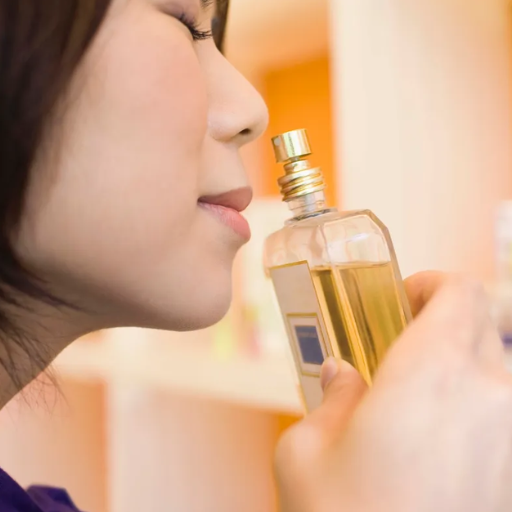
The scent of perfume remains one of the most important parts that authenticates it. Authentic perfumes evolve in depth over time, starting from top through to heart and base notes, each step shifting significantly and having a distinct well-balanced layered scent profile. Fake perfumes lack depth and complexity, instead having a scent that is either overly sharp or flat and unchanging. Real fragrances tend to last longer while fakes will sometimes only last for a few hours and fade rapidly, within an hour. If a scent is overly synthetic or inconsistent with what is expected, it most likely is not real.
Differences in smell between original perfume and fake fragrance
Fake perfume uses low-quality synthetic ingredients, unlike an original perfume which is carefully crafted. Original perfumes undergo a well-constructed evaporation process in which a fragrance releases starting with top notes, progressing through heart notes, and ending with base notes. This systematic approach results in better dynamic and durable scents often lasting between 6 to 12 hours while fake fragrances lack character.
Oppositely, imitation fragrances make use of cheaper and lower-quality materials which make the scent appear dull and unpolished. Such perfumes often tend to miss the mark on elegance, instead taking the form of overly sweet or strong scents. Further, these fragrances won’t change over time, meaning they will remain stagnant, dull, and one-dimensional. Evidence shows that authentic perfumes last much longer, while counterfeit versions tend to fade away within an hour or two due to not having fixatives and other essential components that enhance longevity.
In addition, original perfumes go through extensive testing to perfect scent balance. Their notes undergo a metamorphosis once placed on the skin, merging with the body and hand’s chemistry for a quasi-customized fragrance. In contrast, fake perfumes tend to have unbalanced scents. Some go so far as to cause skin irritation due to the use of unregulated chemicals. Such differences highlight the significance of reliable perfume design to savor an authentic and seamless olfactory experience.
How the perfume experience changes with counterfeit products
Perfume fakes greatly affect the fragrance experience as well as the quality, safety, and longevity of the scent. Authentic perfumes are durable and appealing because they are crafted with quality ingredients and blended properly. Counterfeit versions of perfumes are made with low-grade, synthetic materials that partially mimic the scent of real perfumes. Additionally, authentic perfumes are able to sustain substantial hours of fragrance, around six to eight hours, while counterfeit perfumes fade within one to two hours. This difference is often a result of counterfeit versions lacking high-quality essential oils and fixatives.
Moreover, fake perfumes have been known to contain dangerous materials that can be very harmful to human health. Some fake perfume products are reported to contain methanol, benzene, and even urine which can cause allergies, irritation of the skin, and breathing problems. Certain research conducted regarding beauty products including perfumes has been found to have around thirty-three to forty percent contamination with chemicals which is dangerous for consumers. In addition to direct harm, fake perfume products add to brand trust issues by causing multi-billion dollar losses to the fragrance industry every year.
Obtaining genuine fragrances guarantees the reliability, luxury, and safety that counterfeit products cannot replicate. Buyers are advised to acquire perfumes from official distributors and scrutinize for authenticity indicators including but not limited to; correct labeling, batch numbers, and the quality of the container—thereby not succumbing to malpractices.
Testing perfume on your skin to identify the real thing
I watch how the fragrance interacts with my body chemistry while I wait for a few minutes after putting a few drops on my wrist or my elbow. I give it a whiff every now and then to see how the perfume develops. The authentic ones usually have complex rich fragrances that evolve over time while the counterfeits tend to smell flat or fade away quickly. I also consider absorption. Genuine perfumes are smooth and non-greasy to the touch making them easy to transmetabolize and absorb. Lastly, they are meant to be everlasting so scents can tell me their depth. Different perfumes also mean different smells which should be describable.
Where should I buy perfume to avoid purchasing counterfeits?
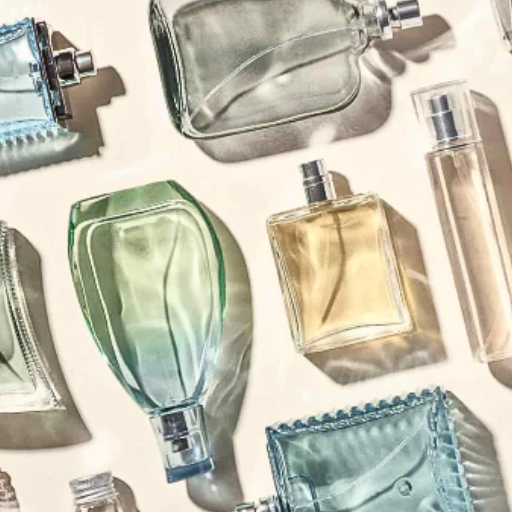
Avoid purchasing from street vendors or online unknown marketplaces which sell fragrances as they are likely counterfeiting products. Make sure to check the label and look for authentic seals and proper packaging. Buy from licensed perfume shops or the brand’s official websites as they are trustworthy. If these don’t help check the seller’s warranty and trust them or call customer service asking who is an authorized seller to avoid doubt.
Risks of buying perfume online and how to minimize them
Buying perfumes online can be risky, such as acquiring counterfeit merchandise, damaged goods, or falling prey to scams. Purchasing fake perfumes increases the chances of buying inferior goods which are not safe and will more often than not contain toxic substances that will lead to skin and allergic reactions. According to some reports, the online counterfeit cosmetic marketplace is rapidly expanding and each year, millions of dollars are lost due to fake cosmetics. Damage during shipping is another universal problem where items like glass perfume bottles get damaged as a result of inadequate packaging.
Changing these tactics requires the consumer to shop from authorized and authorized merchants and as well as use secure payment methods. Importance should also be placed on using the seller’s review pages as he most often is the best judge, Use of clear-cut return policies, best seller return policies, and laissez-fair return policies will also guarantee anonymity to the buyers to some extent. Customers can address their issues online which makes work much easier. Careful enthusiasm combined with purchasing intelligence helps the online buyers purchase perfumes without hurdles.
Why department stores and authorized retailers offer authentic products
Due to their brand sourcing and quality control procedures, department stores and authorized retailers are reliable sources for authentic goods. These businesses partner directly with recognized brands or their official distributors, meaning all goods are procured as brand-approved items. Unlike third-party sellers, authorized retailers often have contractual agreements with brands, which include stipulations on handling, presentation, and pricing of products.
Furthermore, department stores and authorized retailers mitigate the risk of counterfeit goods within their supply chains. Recent industry studies suggest that counterfeiting in the luxury market is worth billions of dollars each year, which makes purchasing from reliable sources extremely important. Many brands also offer product verification features including serial numbers or QR codes, provided only through authorized dealers.
In addition to authenticity, these retailers provide exceptional customer service along with flexible return policies, adding additional comfort when purchasing. This blend of credibility, transparency, and responsiveness, alongside the former, enables shoppers to trust department stores and authorized retailers when purchasing genuine goods.
Red flags when a deal seems too good to be true
When a deal seems too good to be true, it is bound to raise certain concerns regarding fraud or deception. One such red flag is an astonishingly low deal that has been proposed relative to the market approaches. Take, for example, a scenario in which an expensive item such as a brand name listed electronic or a luxury item is offered at a fraction of the retail price; this is casting very strong doubts on where the item came from and how genuine the seller is.
Another worsening indicator is insufficient seller information lacking transparency, credibility or trustworthiness. These sellers are scammers will always sell fraudulent items, and they sell them on inexistent third-party websites and unknown sellers with no or very few reviews. Businesses such as these fall under the category of fake retailers; extinct between thousands rather than devise thousands of online scams stranded
Pressuring people to buy preemptively also raises clarion calls. “Act fast,” “buy now,” and fast disappearing stock are standard phrases meant to give the shoppers the impression they need to buy very quickly. It is worth noting that if the seller accepts only payments which cannot be traced like crypto or wire transfers, then we are dealing with fraud.
Lastly, differences in product descriptions, overly vague descriptions, or missing images can indicate potential scams. Scammers tend to use generic stock images in place of detailed product photos. Paying attention to detail, researching, and validating information before making a purchase can save consumers from “too good to be true” offers.
What are the price indicators that might suggest a perfume is fake?

A distinct sign of price fraud is when a designer perfume is priced significantly lower than its market value. New and popular designer scents usually do not get steep discounts. Promotions that are too good to be true are often accompanied with counterfeit goods. Be careful of bulk sellers hawking bulk products at absurdly low rates; this is another classic tactic by counterfeiters. Compare prices with reputable sellers or the brand’s official website for consistency.
Why expensive perfume brands are often counterfeited
High-end luxury perfume brands are often counterfeited because of their lucrative profit potential and high demand. Luxury scented brands alone are expected to exceed $60 billion in revenue by 2028, indicating the large consumer interest in these products. Chanel and Tom Ford are just a few of the favorites deemed high-end luxury perfume brands, which position themselves as economic targets for counterfeiters, by reproducing and selling them for way less than the actual worth. These counterfeit goods are mostly hawked online or even on the streets, where verifying whether they are genuine or not before parting with cash is next to impossible. Furthermore, the acute and lavish perception tied to luxury perfumes increases the appetite for counterfeit versions, as many consumers want these logos as status symbols without spending the actual money. In addition to defrauding legitimate businesses, counterfeit goods also pose business safety risks because they are laden with dangerous and regulated chemicals.
How to spot when designer perfume pricing indicates a fake
Determining the pricing of a designer fragrance can reveal a lot about its authenticity. Like other designer products, perfumes undergo creative and labor-intensive production processes, thus, authentic brands would never price their products lower than certain amounts, even when on sale. In this case, if a designer perfume is being sold for way below the retail price, especially in suspicious online shops, independent stores, or marketplaces, then it is likely a fake.
For instance, some of the luxury brands Chanel and Tom Ford do not permit rampant discounting off their fragrances, especially from unofficial retailers It’s common to see more than 50% price cut on fragrances and that are fake. reports suggest counterfeits are always advertising fake perfumes at laow figures like 20−50mwhiletherealonesisover20−50mwhiletherealonesisover100.
Moreover, licensed sellers will not sell for lower than set prices within their authorized circles. While shopping on discount sites, always check the price against the official webpage or reputable upscale stores. If the difference is sizeable, or the price appears too good to be true, it is most likely fake. These pricing discrepancies are often accompanied by other red flags such as missing complete ingredient lists, or vague information about the seller, illustrating the necessity for cautious purchasing and thorough research.
Comparing prices to identify potential counterfeit products
Gaining access to classified industry data, especially when tracking counterfeit items, is fairly challenging. Take for example the price range for a well-known skincare serum, which averages around $60 to $90. If an independent seller is offering it for $25, that is suspicious. More recent studies on consumer behavior identify that the pricing of counterfeit goods is usually set at 30% to 70% lower than the authentic items, which are usually reserved for dummy goods purchased to deceive targeted audiences.
In addition, top-shelf brands need to maintain a minimum price level because their products are high-quality and they have stringent internal company policies as well as brand policies. Their sudden price decrease can suggest severe issues such as adulteration, poor storage conditions, or more simply – outright fraud. Verification of multiple reputable e-commerce websites or brand-licensed distributors helps contain neutral ranges of price verification. This approach allows genuine offers with reduced prices to be distinguished from offers with pricing that is too low. The data supports the notion that counterfeit goods are for real out there causing enormous financial damage on an annual basis while threatening the safety of consumers.
Reference Sources
-
Rapid discrimination and counterfeit detection of perfumes by an electronic olfactory system:
- Explores the use of an electronic olfactory system to detect counterfeit perfumes.
- Focuses on analyzing the scent and packaging to identify authenticity.
- Highlights the effectiveness of combining scent analysis with visual inspection.
-
- Uses advanced forensic techniques to differentiate between real and fake perfumes.
- Discusses the role of packaging and chemical composition in identifying counterfeits.
- Highlights the importance of systematic detection methods.
-
Multivariate classification of original and fake perfumes by ion analysis and ethanol content:
- Presents a method for identifying fake perfumes using ion analysis and ethanol content.
- Includes insights into packaging differences, such as box quality and design.
- Provides a practical approach for distinguishing authentic products.
-
- Examines how packaging design influences consumer perception and behavior.
- Discusses the role of visual elements in identifying authentic perfume boxes.
- Uses eye-tracking technology to analyze consumer attention to packaging details.
-
Determination of authenticity of brand perfume using electronic nose prototypes:
- Investigates the use of electronic nose prototypes to evaluate perfume authenticity.
- Highlights the combination of scent and packaging analysis for counterfeit detection.
- Provides a standard for determining the quality and authenticity of perfumes.
Frequently Asked Questions (FAQs)
Q: How can I spot fake perfume packaging?
A: To spot fake perfume packaging, look for poor quality printing, misspelled words, and flimsy materials. Authentic packaging often uses high-quality materials and printing techniques.
Q: What are the indicators of a fake perfume bottle?
A: Indicators of a fake perfume bottle include uneven glass thickness, incorrect logos, and poorly fitted caps. The bottle of a fake perfume often lacks the precision and quality of an authentic one.
Q: How can I verify the authenticity of a perfume?
A: You can verify the authenticity of a perfume by checking the batch code on the box and bottle. Authentic products often have matching batch and serial numbers that can be verified with the manufacturer.
Q: Are there differences in the packaging of a fake perfume?
A: Yes, the packaging of a fake perfume is often different from the original, with noticeable differences in color, quality, and design details.
Q: Why is it important to always buy authentic perfumes?
A: It is important to always buy authentic perfumes to ensure you receive the quality of the perfume you expect, as fake perfumes may contain harmful ingredients and do not offer the same scent profile.
Q: How can I check the batch and serial numbers?
A: Check the batch and serial numbers on both the box and the bottle. They should match and be in the correct format as provided by the brand. This can help in spotting fake perfumes.
Q: What should I look for when examining the perfume box?
A: When examining the perfume box, ensure that the text is clear, the materials are sturdy, and any seals or holograms are intact and of high quality. Fake perfumes are often packaged in boxes that lack these qualities.
Q: How can online seller reviews help in spotting fake perfumes?
A: Online seller reviews can provide insights into other customers’ experiences, helping you spot fake perfumes by identifying sellers with a history of selling counterfeit products.
Q: What should I do if I suspect I’m buying a fake perfume?
A: If you suspect you’re buying a fake perfume, reconsider the purchase and report the seller if possible. Always buy from reputable sources to ensure you’re buying the real deal.

